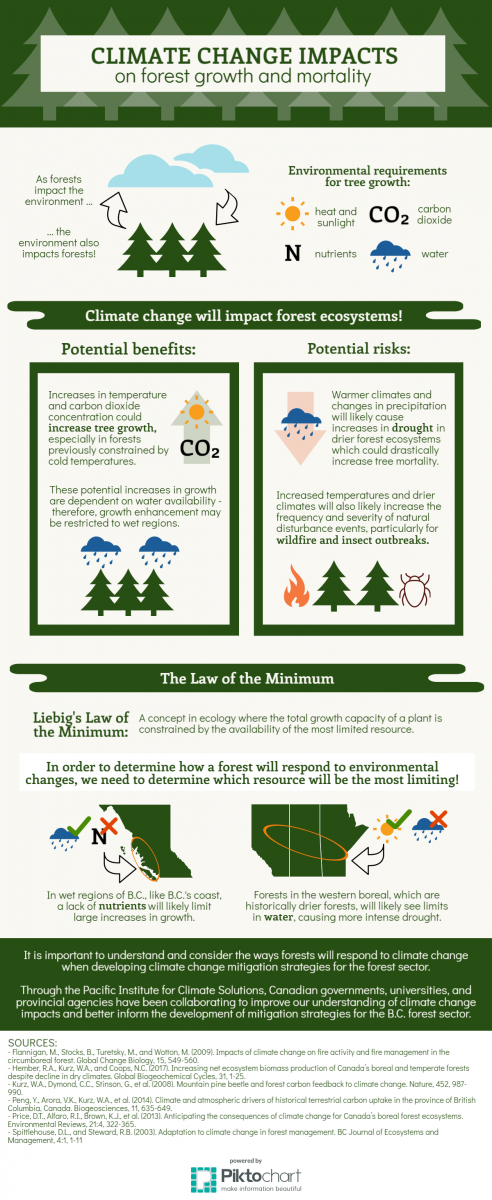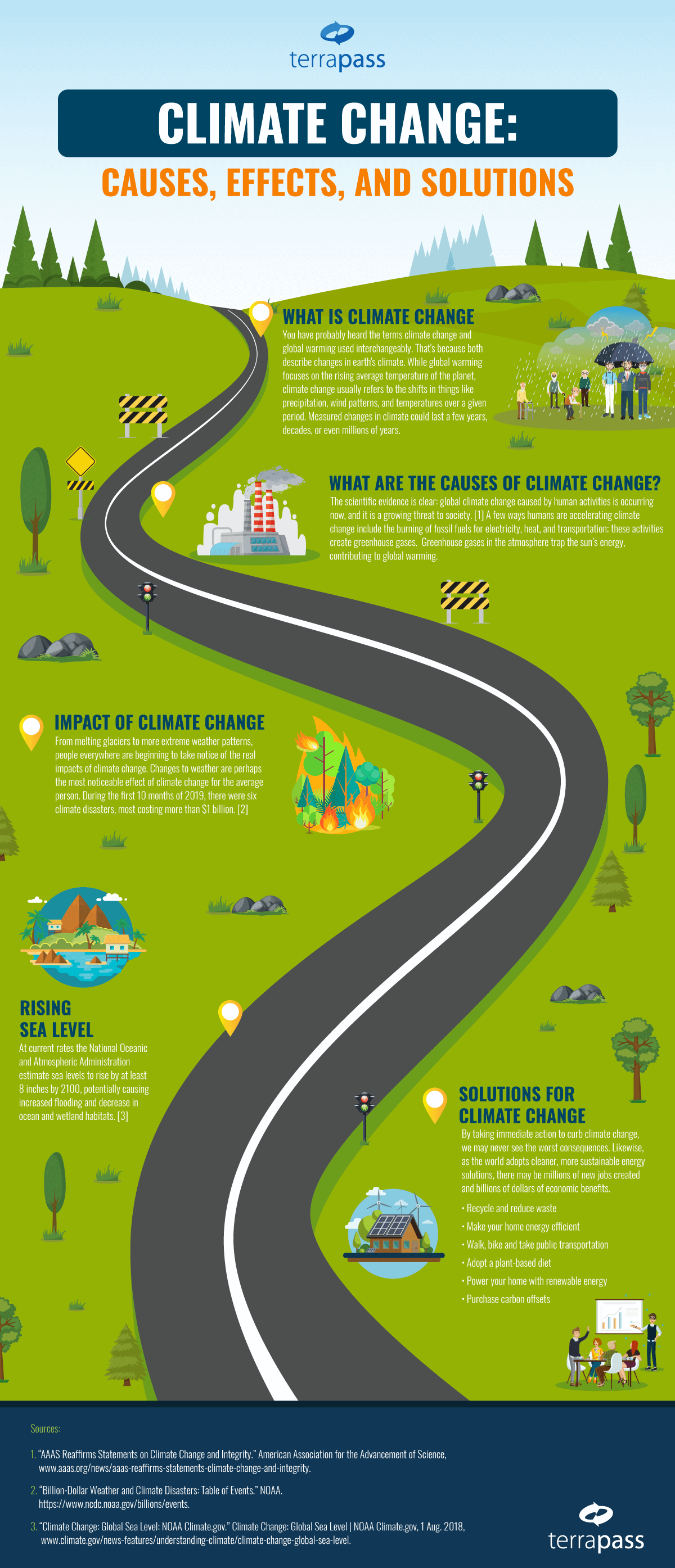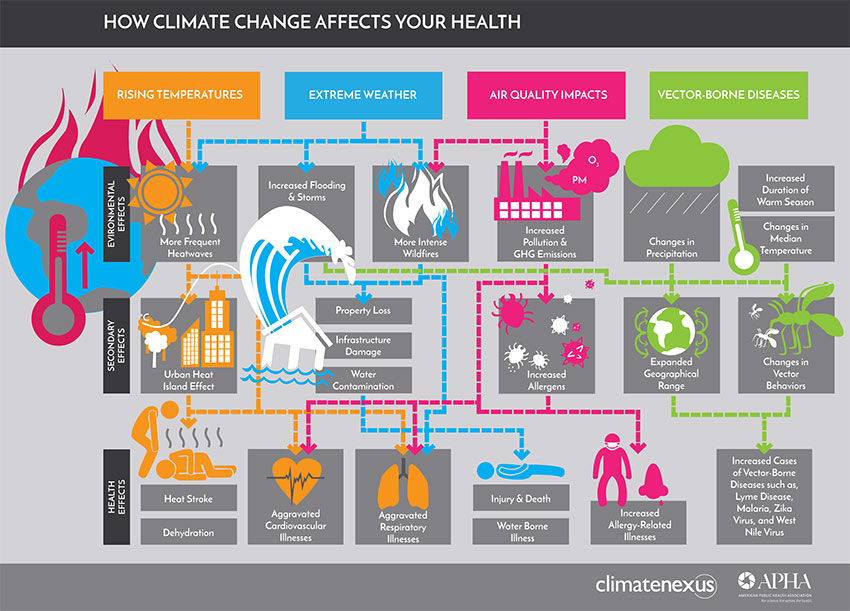
#IMPACTS OF CLIMATE CHANGE INFOGRAPHIC INSTALL#
They are working to build flood defenses, plan for heat waves and higher temperatures, install better-draining pavements to deal with floods and stormwater, and improve water storage and use.Īccording to the 2014 report on Climate Change Impacts, Adaptation and Vulnerability (page 8) from the United Nations Intergovernmental Panel on Climate Change, governments at various levels are also getting better at adaptation. Cities and local communities around the world have been focusing on solving their own climate problems. Local governments are therefore at the frontline of adaptation. While climate change is a global issue, it is felt on a local scale. The faster the climate changes, the more difficult it will be. As our climate changes, we will need to adapt. Our modern life is tailored to that stable climate and not the much warmer climate of the next thousand-plus years. Earth’s climate has been relatively stable for the past 10,000 years, and this stability has allowed for the development of our modern civilization and agriculture. Climate change (drought in particular) has been at least partly responsible for the rise and fall of civilizations. Throughout history, people and societies have adjusted to and coped with changes in climate and extremes with varying degrees of success. It also includes making the most of any potential beneficial opportunities associated with climate change (for example, longer growing seasons or increased yields in some regions). The goal is to reduce our risks from the harmful effects of climate change (like sea-level rise, more intense extreme weather events, or food insecurity). The goal of mitigation is to avoid significant human interference with Earth's climate, “stabilize greenhouse gas levels in a timeframe sufficient to allow ecosystems to adapt naturally to climate change, ensure that food production is not threatened, and to enable economic development to proceed in a sustainable manner” (from the 2014 report on Mitigation of Climate Change from the United Nations Intergovernmental Panel on Climate Change, page 4).Īdaptation – adapting to life in a changing climate – involves adjusting to actual or expected future climate. Mitigation – reducing climate change – involves reducing the flow of heat-trapping greenhouse gases into the atmosphere, either by reducing sources of these gases (for example, the burning of fossil fuels for electricity, heat, or transport) or enhancing the “sinks” that accumulate and store these gases (such as the oceans, forests, and soil). Adapting to the climate change already in the pipeline (“adaptation”).Reducing emissions of and stabilizing the levels of heat-trapping greenhouse gases in the atmosphere (“mitigation”).

The last time levels were that high was about three to five million years ago, during the Pliocene Epoch.īecause we are already committed to some level of climate change, responding to climate change involves a two-pronged approach:

In 2013, the daily level of carbon dioxide in the atmosphere surpassed 400 parts per million for the first time in human history. Despite increasing awareness of climate change, our emissions of greenhouse gases continue on a relentless rise.

How much climate change? That will be determined by how our emissions continue and exactly how our climate responds to those emissions.

In this way, humanity is “committed” to some level of climate change. So even if we stopped emitting all greenhouse gases today, global warming and climate change will continue to affect future generations.
#IMPACTS OF CLIMATE CHANGE INFOGRAPHIC DRIVER#
Carbon dioxide, the heat-trapping greenhouse gas that is the primary driver of recent global warming, lingers in the atmosphere for many thousands of years, and the planet (especially the ocean) takes a while to respond to warming. It involves many dimensions – science, economics, society, politics, and moral and ethical questions – and is a global problem, felt on local scales, that will be around for thousands of years. Climate change is one of the most complex issues facing us today.


 0 kommentar(er)
0 kommentar(er)
